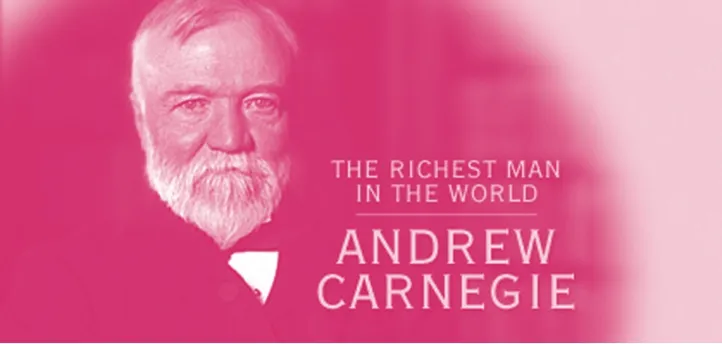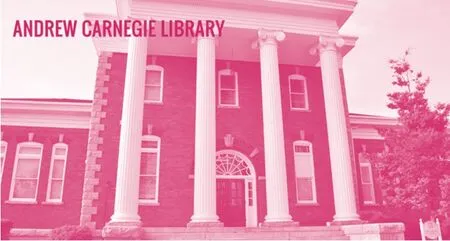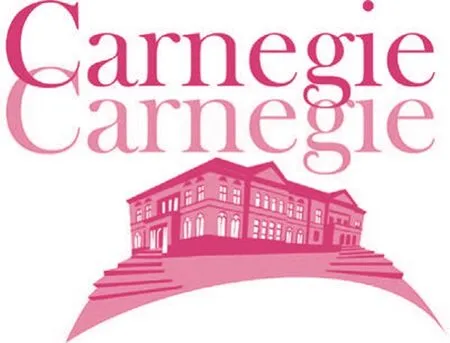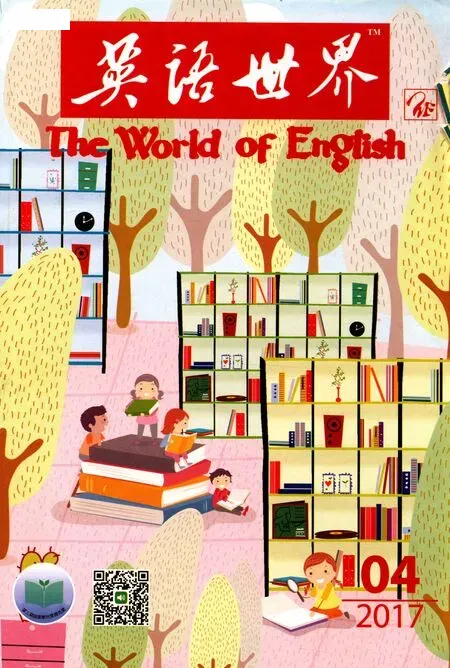How Andrew Carnegie Turned His Fortune into a Library Legacy
By Susan Stamberg
How Andrew Carnegie Turned His Fortune into a Library Legacy
By Susan Stamberg
Andrew Carnegie was once the richest man in the world. Coming as a dirt poor1dirt poor〈俚〉极贫困的。kid from Scotland to the U.S., by the 1880s he’d built an empire in steel—and then gave it all away: $60 million to fund a system of 1,689 public libraries across the country.
[2] Carnegie donated $300,000 to build Washington, D.C.’s oldest library—a beautiful beaux arts building2学院派建筑。Beaux Arts一词源自法语,意指艺术作品,如今用之命名一种艺术风格:学院派艺术(又称布杂艺术)。该风格源自巴黎高等艺术学院(École des Beaux-Arts)在课堂上教授学生的理念,1885至1920年期间发展并繁荣。塔形建筑群、装饰性壁柱、栏杆、带窗的阳台等都是学院派建筑的特色所在。纽约市公共图书馆(New York Public Library)、纽约中央车站(New York’s Grand Central Terminal)以及波士顿公共图书馆(Boston Public Library)等,都是典型的学院派建筑。此处所说的图书馆指华盛顿特区的卡内基图书馆,据2016年12月的新闻报道,苹果公司准备租赁该楼,建成一个苹果零售店。that dates back to3date back to追溯至。1903. Inscribed above the doorway are the words: Science, Poetry, History. The building was “dedicated to the diffusion4diffusion扩散,传播。of knowledge.”
安德鲁·卡内基一度是世界上最富有的人。他本是从苏格兰移民美国的一个穷小子,到19世纪80年代便建立起自己的钢铁王国——但后来又把财富全部捐出:6000万美元建立了1689所公共图书馆,形成覆盖全美的公共图书馆体系。
[2]卡内基捐赠30万美元,修建起华盛顿特区最早的图书馆——一栋非常漂亮的学院派风格建筑,历史可以追溯到1903年。正门上方铭刻着“科学、诗歌、历史”的字样。整座建筑“专用于知识的传播”。
[3] It opened in 1903 to women, children, all races—African-Americans remember when it was the only place downtown where they could use the bathrooms. During the Depression5又称the Great Depression经济大萧条,1929年始于美国股市崩溃,随后席卷全球,一直持续到30年代晚期,是20世纪持续时间最长、影响最为广泛深远的一次经济大萧条。, D.C.’s Carnegie Library was called “the intellectual breadline6breadline指排队等待领取救济食品的队伍。on the breadline形容极度贫困的状态。.” No one had any money, so you went there to feed your brain. Washington writer Paul Dickson, author of The Library in America, says the marble palace was an early and imposing Capitol7Capitol= Capitol Hill国会山。它是华盛顿特区的一座山丘,因其山顶有美国国会大厦而常被当作美国国会的别名。卡内基图书馆位于国会山地区,具体位于弗农山(Mt. Vernon)广场附近,与华盛顿会议中心(Walter E. Washington Convention Center)隔广场相望。institution.
“This went in well8well此处是副词,用于介词短语前表示强调,意为“大大地,远远地”。before the monumental limestone and marble buildings of Pennsylvania Avenue, Constitution Avenue9宾夕法尼亚街和宪法街是国会山地区的两条街道,有一些重要的历史建筑,如宾夕法尼亚街上的白宫、福特中心等,宪法街的史密斯博物馆、美国国家艺术博物馆等。. This was one of the first really beautiful public buildings,” he says.

[3]该图书馆于1903年开始运营,向妇女、儿童和所有种族的人敞开大门——黑人们回忆,在当时的市中心,他们唯一获准使用其中厕所的建筑便是这个图书馆。大萧条期间,华盛顿特区的卡内基图书馆被称为“施舍知识的救济堂”。大家都没钱,所以尽管去卡内基图书馆,给大脑补充营养。华盛顿作家、《美国图书馆》一书的作者保罗·迪克森声称,这座大理石殿堂是国会山一带修建较早的一座建筑,令人印象深刻。
“它比宾夕法尼亚街和宪法街那些气势恢宏的石灰岩和大理石建筑早多了。它属于最早一批修建起来的真正壮观的公共建筑。”他说。

[4] Carnegie libraries are still the best buildings in many towns. Over the years some have been expanded or torn down. And, in addition to books and computers, Carnegie libraries find new ways to serve the community.
[5] The public library in Woodbine, Iowa, loans cake pans — people don’t keep all sizes and shapes of cake pans at home, “so they check ’em out and bake their cakes and bring ’em back,”explains Woodbine library director Rita Bantam. “[It’s] offering a service that people need. It brings people into the library.”
[6] Andrew Carnegie gave $7,500 to Woodbine. That paid for the building itself. The towns had to raise money for books, salaries and maintenance. Before Carnegie, Bantam says, the library was located in an unusual section of Woodbine’s town hall: “It was over the jail,” she explains, “they had to close the library when the jail was occupied.”
[7] From jail to cakepans, public libraries are embedded10embed使插入。in their communities. In South Carolina, the Union County Carnegie Library—named best small library in America a few years back—invites Ronald McDonald11麦当劳叔叔是身穿黄色小丑衣的一个人物形象,是麦当劳快餐连锁店的招牌吉祥物和企业形象代言人,罗纳德·麦当劳是其官方名称。over to lure kids into summer reading programs. Director Ben Loftis says there were subscription12subscription(俱乐部的)会员费。libraries in South Carolina before 1903 when his was built—with a $10,000 Carnegie grant—but this was the first public library.
[4]在许多城镇,卡内基图书馆都仍是当地最好的建筑。随着时间的流逝,有些图书馆扩建了,有些则被拆除了。除了书籍和电脑,卡内基图书馆还找到了新的途径来服务社区。
[5]艾奥瓦州伍德拜恩市的卡内基公共图书馆出借蛋糕模具,因为普通人家里通常不会买齐所有规格和形状的蛋糕模具,“所以人们可以来借模具,烤完蛋糕之后再还回来。”伍德拜恩图书馆主管丽塔·班塔姆解释说,“这种服务是人们需要的。它会把人们聚到图书馆里来。”
[6]安德鲁·卡内基捐给伍德拜恩7500美元。这笔钱用于建造图书馆大楼。伍德拜恩当地市政得筹资购买书籍,支付工作人员工资,并负责图书馆维护。据班塔姆介绍,在卡内基出资之前,该市的图书馆坐落在伍德拜恩市镇厅一个意想不到的角落:“和监狱在一处,”她解释说,“如果监狱来了犯人,图书馆就得关闭。”
[7]从监狱到蛋糕模具,公共图书馆深深融入了当地社区。在南卡罗来纳州,尤宁县的卡内基图书馆几年前曾荣获全美最佳小型图书馆的称号。该图书馆邀请麦当劳叔叔来到图书馆,以吸引孩子们参加暑期阅读计划。主管本·洛夫蒂斯声称,在卡内基捐款1万美元于1903年建成该图书馆之前,南卡罗来纳有一些收费的会员制图书馆,而该馆是第一座公共图书馆。
“It went from being for just the wealthy elite landowners and planters to actually being a service for the entire county that everybody has access to,”he says.
[8] It was pioneering—public and free. Those were the visionary keystones of Carnegie’s library mission. The mission was born in Allegheny City, Pa., where Carnegie worked as a bobbin boy in a textile mill—his job was to fill the bobbins with thread and oil them for the machines. He was determined to improve his lot13lot际遇,境况,命运。, but he couldn’t pay the $2 subscription for a local library that was available only to apprentices (and he certainly couldn’t afford to buy books).
[9] He sent a letter to the library administrator asking for access to the library, but the administrator turned him down flat. So 17-year-old Andy got the letter published in The Pittsburgh Dispatch.
“以前那些只面向农场主、种植园主等有钱精英阶层,这个则是真正面向全县公众的,每个人都能来。”他说道。
[8]这一点颇具开创性:既面向公众又不收取费用。卡内基图书馆的使命,其前瞻性意义便在于此。这一使命早在卡内基于宾夕法尼亚州阿勒格尼市做工期间便已萌芽。当时,他在一家棉纺厂当绕线工——把绳子缠到线轴上,并给线轴上油,为上机器做准备。他不甘于此,决心要改变命运,却付不起2美元的会员费,无法进入当地一家只向学徒开放的图书馆(当然,他更买不起书)。
[9]他给图书馆馆长写了一封信,请求允许他进入图书馆,却被断然拒绝。于是,17岁的卡内基便设法将他的信发表在《匹兹堡快报》上。
“He made his case so well that the administrator backed off immediately,”explains Carnegie biographer David Nasaw. “And the library was opened to working men as well as apprentices. He got what he wanted.”
[10] He usually did. Quick, smart and self-educated, “the little Scotsman from Pittsburgh” went from bobbins to telegraphs to railroads to iron and steel. In 1901, when he sold Carnegie Steel to J.P. Morgan for almost half a billion dollars, it became part of U.S. Steel—and Carnegie became the world’s richest man. And then he gave it away: a total of $350 million.
[11] Was he the Bill Gates of his day?“I think Bill Gates would very much like to be known as the Carnegie of his day,” says Nasaw.
[12] In 1889 Carnegie wrote an article called “The Gospel of Wealth,”in which he spelled out his views on philanthropy: “In bestowing charity the main consideration should be to help those who help themselves.”
[13] The rich should give, so the poor could improve their own lives—and thus the lives of the society. Giving was a code of honor. “The man who dies rich dies in disgrace,” Carnegie said.
[14] Nasaw says the steel master was in his 30s when he decided he was merely the shepherd of his wealth.
“他的要求提得太合情合理了,馆长只得立即收回成命了。”卡内基的传记作家戴维·纳沙解释说,“图书馆不仅向学徒开放,也向工人开放了。他得遂所愿。”
[10]他通常都能得遂所愿。“这个来自匹兹堡的小个子苏格兰人”灵敏聪慧,自学成才,从线轴到电报,再到铁路和钢铁行业。1901年,他以将近5亿美元的价格将卡内基钢铁公司出售给J.P.摩根,卡内基钢铁公司成为美国钢铁公司的一部分,而卡内基则成为世界上最有钱的人。但后来他便将钱捐了出去,总额高达3.5亿美元。
[11]他是他那个时代的比尔·盖茨吗?“我倒觉得比尔·盖茨会很愿意别人称他为这个时代的卡内基。”纳莎说道。
[12] 1889年,卡内基写了一篇题为“财富的福音”的文章,阐明了他对慈善事业的看法:“在决定慈善捐赠的时候,主要的考虑应该是帮助那些自助的人。”
[13]富人应该给予,以便穷人能够改善自己的生活——并从而提高全社会的生活质量。给予是荣誉的准则。“一个有钱人如果到死还是很有钱,那就是一件可耻的事情。”卡内基说。
“It is his responsibility to give it back,” Nasaw says, “to return it to the community because the community—all of those men and women who contribute to the making of Carnegie steel, the mothers who feed their children, the day laborers, the whole large community—is responsible for making this wealth and they’re the ones who have to get it back.”
[15] So public libraries became instruments of change—not luxuries, but rather necessities, important institutions—as vital to the community as police and fire stations and public schools.
[16] Now, Carnegie was a complicated man. Brilliant, charming, generous—and brutal. Carnegie biographer Les Standiford, author of Meet You in Hell, says the industrialist presided over what is considered this country’s most bitter labor dispute.

[17] “The Homestead Steel Strike of 1892141892年,美国霍姆斯达特地区的卡内基钢铁厂总经理亨利·弗里克向工人宣布降低工资的决定,遭工人和工会的反对,引发工人大罢工。罢工遭到保安公司和州民兵的开枪镇压,十多名工人丧生。事后,卡内基百般撇清自己在罢工事件中的责任,但多年后随着卡内基的私人信件向公众开放,研究人员方才知道弗里克的自行裁量权由卡内基授予,采取一切必要手段打击工会也在授权范围内。所以文中使用了conspire一词,意为“密谋,阴谋策划”。—in which he and Henry Clay Frick conspired to mercilessly beat down the steelworkers who were striking for better pay and better working conditions. It stands to this day as the worst labor conflict in American history,” Standiford says.
[14]纳莎声称,这位钢铁巨头早在其三十多岁时便做出决定,他只是财富的看管人。
“将财富捐赠出去,回馈社会,这是他的责任,”纳莎说,“因为社会才是这些财富的真正制造者——那些锻造了卡内基钢铁公司的男男女女,那些哺育孩子的母亲,那些临时工,一整个大的社区——他们才是必须要得到财富的人。”
[15]因此,公共图书馆成为变革的契机——它们不是奢侈品,而更是必需品,是重要的机构,就和警察局、消防队、公立小学一样是社区的关键组成部分。
[16]如今看来,卡内基是一个难以一言蔽之的复杂人物。他既聪明、有魅力、慷慨大方,但又十分残酷无情。据卡内基的传记作家来斯·斯坦迪福(《地狱里见:安德鲁·卡内基传》的作者)所云,美国最为惨烈的一次劳资纠纷事件就发生在这位工业巨头当权时期。
[17]“1892年,美国霍姆斯达特地区的钢铁工人罢工。钢铁工人要求提高工资,改善工作条件,但卡内基与时任该地区卡内基钢铁厂总经理亨利·克雷·弗里克秘密商议,无情地镇压罢工的工人。直到今天,它仍是美国历史上最糟糕的劳资冲突。”斯坦迪福说道。
[18] “Increase our wages,” the workers demanded. “What good is a book to a man who works 12 hours a day, six days a week?”
[19] Nasaw says Carnegie thought he knew better and replied to his critics this way: “If I had raised your wages, you would have spent that money by buying a better cut of meat or more drink for your dinner. But what you needed, though you didn’t know it, was my libraries and concert halls. And that’s what I’m giving to you.”
[20] And so he did: 1,689 public libraries. Temples of learning, ambition, aspiration for towns and cities throughout the United States. ■
[18]“给我们涨工资。”工人们提出要求,“对一个每天工作12个小时、每周工作6天的人来说,书有什么用?”
[19]纳莎说,卡内基认为自己更有眼光,他这么回应他的批评者:“假如我提高了你们的工资,你们就会把钱用来买一块更好的肉或者更多的酒。但是你们真正需要的,虽然你们自己并没有意识到,是我的图书馆和音乐厅,而那正是我将赠予你们的。”
[20]他的确这么做了:共计1689座公共图书馆——坐落在美国大大小小的城镇中,成为知识、雄心和理想的殿堂。□
图书馆:钢铁大王卡内基的遗产
文/苏珊·施坦贝格 译/陈丽
(译者单位:北京外国语大学)
——读《卡内基自传》

